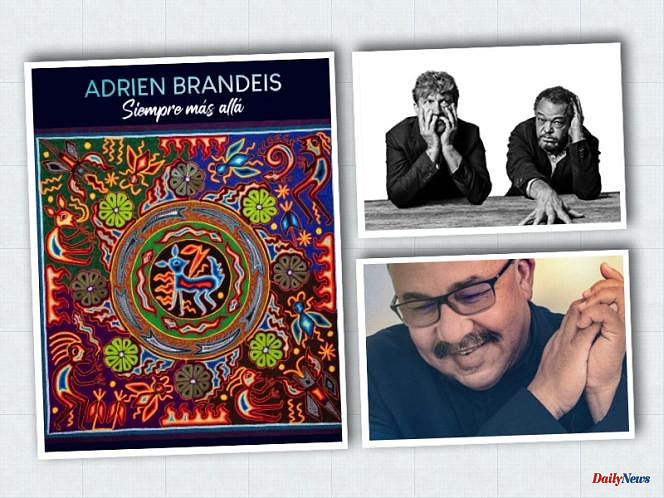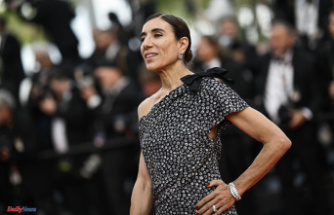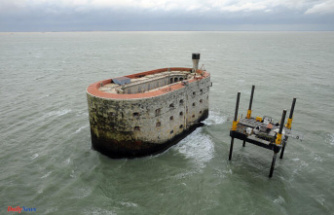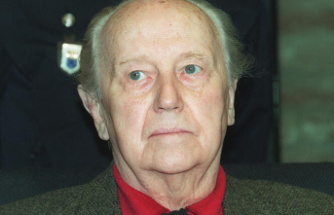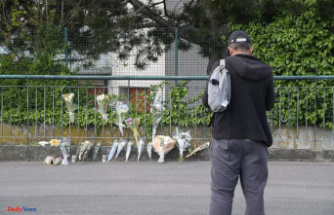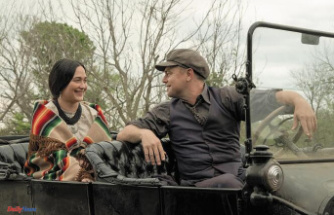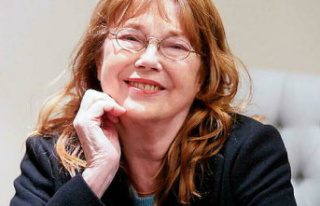Adrien Brandéis, the Latin-jazz lover
The first story of the day shines its spotlight on a young pianist not Latin for two pennies, who has fallen into the cauldron of Latin music. It was during his academic studies that Adrien Brandéis fell in love with Latin jazz. At a time when his classmates are cultivating more classic tastes, it is Michel Camilo and Chick Corea who prance at the top of his personal pantheon.
A first album tinkered with some comrades and here is Adrien quickly spotted. For his second try, he goes to Paris and surrounds himself with the best musicians of the Afro-Caribbean scene, in the forefront of which Orlando Poleo, renowned Venezuelan percussionist.
Mexico, his "land of opportunity"
His third discographic production entitled "Siempre Más Allá" was conceived during the pandemic. When France reconfines itself for the second time, the pianist is in the middle of a third tour in Mexico, which has welcomed him since his first album. He was offered a residence in ideal conditions in a 500-seat auditorium equipped with a grand piano. While in France musicians find themselves on technical unemployment for long months, Adrien has the opportunity to work on his instrument and continue to compose.
Its "land of opportunity" is the setting of the record: original cover by a Huichol artist, inspiration from the melodic line of a famous regional trio, Los Panchos, cover of a classic, Voy A Apagar La Luz. But make no mistake: "Siempre Más Allá" is indeed a Latin-jazz record, written for a format that Adrien particularly likes: a piano/bass/drums/percussion quartet. He recorded in Monterrey with the Brazilian bassist Giliard Lopez, the Mexican drummer José Loria Triay and the Cuban percussionist Roberto Vizcaino Jr. As for his French live-band, it is no less prestigious: Felipe Cabrera (bass), Arnaud Dolmen (drums) and Inor Sotolongo (percussion).
Beyond the percussive tracks (Huachi-Huachi as an aperitif, a punchy Pancho Power, Vizcanaino Blues in descarga mode, with the famous Cuban percussionist Roberto Vizcaino Guillot, father of Roberto Vizcaino Jr, La Buena Vibra, camilien, recorded with the own Michel Camilo's drummer, Horacio El Negro Hernández), "Siempre Más Allá" stands out for its most peaceful tracks: the diptych Ek Balam/Un Peu d'Espoir built around the piano/batá duo (traditional drums of the Afro- Cuban) approached with a very personal angle and an inspiration that the pianist admits to having drawn from Debussy, Ravel, Dutilleux. In Tierra de Oportunidades, he frees himself in solo piano from the rhythmic constraints of Latin music.
Upbeat and inspired, "Siempre Más Allá" will thrill any Latin-jazz lover.
Intimist Thierry Vaton
A first album at 55, and why not? This is what Thierry Vaton must have said to himself during confinement. Without this cursed pandemic, the pianist might have remained the eternal man in the shadows of the Creole scene. At the Baiser Salé, the regulars of the club on rue des Lombards know that he is the manager. Thierry Vaton's business card is as long as your arm: musical director of Angelique Kidjo's live band in Europe, he has worked with Miriam Makeba, Enzo Enzo, Kassav', Philippe Lavil, Dédé Saint-Prix, Tanya Saint-Val .
A specialist in Creole music
Biguine, mazurka, bèlè: "Bel Matjoukan" unfolds the beautiful heritage (its translation into Creole) of the music of Martinique. It must be said that with three books on the subject (including “Le piano dans la musique créole”, highly recommended), co-authored with George Granville, another Martinican pianist, he is one of its specialists.
There are so many pianists from Martinique that he admires… Thierry gladly cites Alain Jean-Marie, Mario Canonge, Marius Cultier, Daniel Alphonsine or Grégory Privat among the youngest. But it's the Americans who make him dream: Chick Corea, Herbie Hancock, Quincy Jones on the arranger side. In "Bel Matjoukan", the musician opts for an electric keyboard. Beyond the touch of modernity, the Fender Rhodes is for him a way to stand out.
After imprinting a suave and Creole color with remarkable pieces such as the Manot introduction or the eponymous title of the disc, the pianist indulges in sensitivity with personal pieces such as La Reine Mère, written in homage to mothers, or Lamento, qu he composed after his father's disappearance. Ayo Flamboyan, written in Yoruba and interpreted by Angélique Kidjo, translated into Creole by Joachim des Ormeaux, the scat provided by Tony Chasseur, constitutes a climax which draws its source from the heart of Africa.
The recording then unfolds a jubilant second part, subtle and chiseled. To accompany him, the pianist surrounded himself with the cream of Caribbean musicians: Thierry (bass) and Jean-Michel Fanfant (drums), Michel Alibo (bass), Bago Balthazar (percussion) as well as the Cuban saxophonist Irving Acao.
Thierry Vaton has two loves: jazz and Creole music. In the big band Mizikopeyi, which he leads with singer Tony Chasseur, the pianist combines jazz and Creole rhythms as part of a large ensemble. With "Bel Matjoukan", Thierry Vaton explores new perspectives, less spectacular but more personal, all the nuances that the mixture of the two genres allows him.
Canonge's beautiful mechanics
In this last chapter, we will not dwell on the story of a pianist, but on the story of a pianist and a double bass player, -better!- the story of a pianist, a double bass player , a saxophonist, a trumpeter and a percussionist. It is appropriate to situate Mario Canonge. When we say pianist from Martinique, we think Alain Jean-Marie (the reference!) and Mario Canonge. Since his first bands, Ultramarine, Sakiyo and Sakesho, Mario Canonge has been inseparable from the Caribbean scene.
His story of friendship with double bassist Michel Zénino started in a funny way. One day, when Mario's daughter tells him that the husband of one of his teachers is a musician, the anecdote goes over his head. So, the day the two meet on stage, the pianist says to the bassist: "It's funny, Zenino is the name of my daughter's teacher", the other replies: "Normal, it's my female ! The two sidemen, parachuted into a formation they did not know, discovered an unsuspected complicity during the concert.
Canonge/Zénino, an unmissable event on rue des Lombards
A duo that formed by accident. It all started with a concert by a trio that turned into a duo following the drummer's false leap. It is the revelation, the beginning of a double bass/piano mano a mano between two musicians from different backgrounds. Since 2008, Mario Canonge and Michel Zénino have reinvented jazz standards every Wednesday at the start of the evening in an almost telepathic relationship. In 2016, they came up with the idea of trying the adventure of the quintet, the holy grail of jazzmen. They compose "Quint'Up" with four hands before they even know the composition of the group.
To decree that such or such formation is an All-Stars is easy. When the members of the said formation, in this case the Cuban saxophonist Ricardo Izquierdo, the American trumpet player Josiah Woodson and the Guadeloupean drummer Arnaud Dolmen (French musician of the year according to Jazz Mag) are so busy that they do not arrive more to meet, we can tell ourselves that there is some truth. To solve the equation, Michel takes advantage of his location in Paimpol, his adopted city, to invite his comrades to a residence that allows them to finalize "Quint'Up 2".
"Quint'Up 2" was written by Michel and Mario for Ricardo, Josiah and Arnaud. A richer album, shorter tracks, more numerous too. Between the five musicians the communication works perfectly. There is a pleasure to meet again, a pleasure to play. While managing to preserve the tension of the first opus (Pa Plis, Who Speaks, Bagad Be Good), the recording offers more breaks (KL's Wedding, Eti Anman, Retoño d'Esperanza). "Quint'Up 2", while preserving the matrix, reveals more personality.
We say to ourselves that it is no longer a question of the quintet of Canonge and Zenino, but simply of Quint'Up, for which it would be hard to imagine another cast. It is fascinating to see the evolution of a formation, from the first version to the beautiful mechanics around which each piece is wonderfully articulated, a formation with full potential. We are already excited to see what these five will deliver next time.

